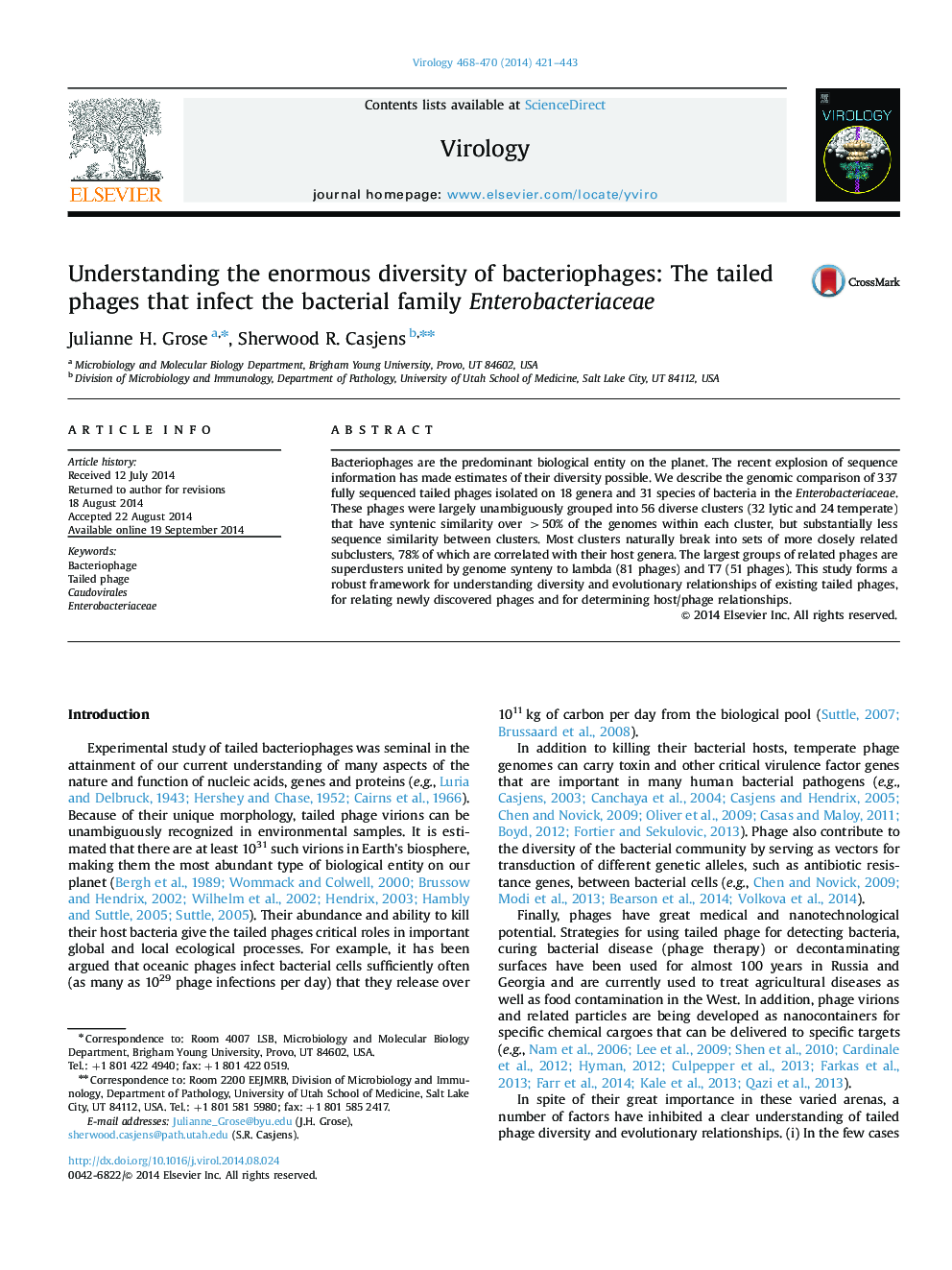| Article ID | Journal | Published Year | Pages | File Type |
|---|---|---|---|---|
| 6139744 | Virology | 2014 | 23 Pages |
â¢We describe the genomic comparison of 337 fully sequenced tailed Enterobacteriaceae phages.â¢These phages were largely unambiguously grouped into 56 clusters (32 lytic and 24 temperate).â¢The largest groups of related phages are superclusters united by genome synteny to lambda and T7.â¢Most clusters naturally break into subclusters, 78% of which are correlated with host genera.â¢This study forms a framework for understanding phage diversity and evolutionary relationships.
Bacteriophages are the predominant biological entity on the planet. The recent explosion of sequence information has made estimates of their diversity possible. We describe the genomic comparison of 337 fully sequenced tailed phages isolated on 18 genera and 31 species of bacteria in the Enterobacteriaceae. These phages were largely unambiguously grouped into 56 diverse clusters (32 lytic and 24 temperate) that have syntenic similarity over >50% of the genomes within each cluster, but substantially less sequence similarity between clusters. Most clusters naturally break into sets of more closely related subclusters, 78% of which are correlated with their host genera. The largest groups of related phages are superclusters united by genome synteny to lambda (81 phages) and T7 (51 phages). This study forms a robust framework for understanding diversity and evolutionary relationships of existing tailed phages, for relating newly discovered phages and for determining host/phage relationships.
